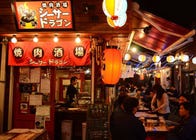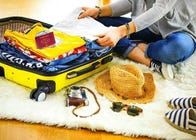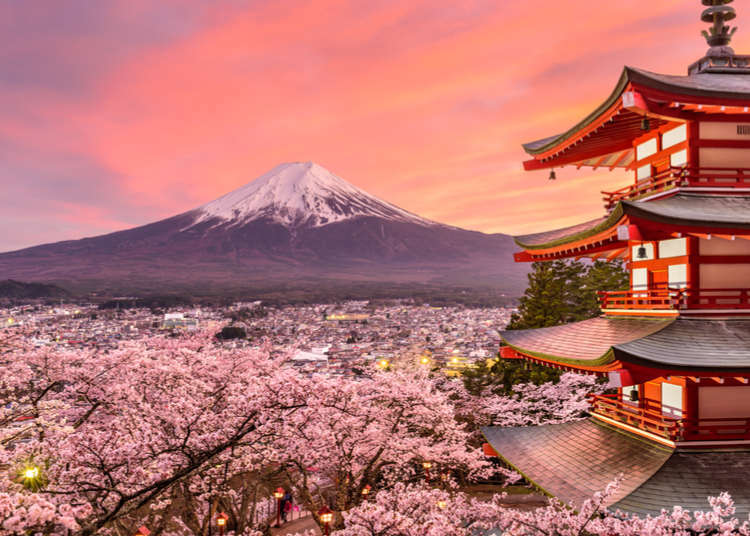
Japan Travel Tips: 9 Things I Wish I'd Known Before Going to Japan
- Written by: Lucio Maurizi
The more you read, watch videos and talk to people who have already been to Japan, the more you can familiarize yourself with things that at first may have appeared to you as quirky or hard to understand. We asked several visitors to Japan to share some of their experiences, and these eight things were commonly shared!
These Japan travel tips will undoubtedly help you a lot, but if you’re adventurous and like to discover things by experiencing them on your own skin, fear not. There’s always something else that no one has thought about. These are just a few of the many things you’ll find helpful!
Japan Travel Tip 1. Book popular places in advance

Isn’t this the truth! It might sound like a no-brainer, but you would be surprised to what extent you’ll have to do this. In another article, we talked about booking restaurants, especially popular ones. In some cases, you have to give them a call weeks ahead of time to secure a table.
This isn’t to say that you must make reservations for every restaurant you wish to visit. It’s perfectly fine to show up at most places without a reservation. However, if it has a Michelin star or widespread acclaim, it’s probably best to avoid wasting time in line by reserving ahead.
When things are popular in Japan, they are really popular and get very crowded quickly. If you add to this that planning weeks and even months in advance is a very common thing for Japanese people, things could get rather tricky for those of us who like impromptu plans.
Some of the most sought-after destinations in Japan are the Ghibli Museum, Tokyo Disneyland and Tokyo Disney Sea, Universal Studios Japan, and the Yayoi Kusama Museum.
One might think that given the size of these destinations, it wouldn’t be that hard to get in just by buying a ticket at the gate. Often, though, this proves to be impossible—not only because of the number of foreign tourists but also (and possibly mainly) because of domestic tourism.
Some of these locations are not only fun and engaging for most, but they also represent some of the pride and staples of Japanese culture and media.
Ghibli Museum, Mitaka
Take a look at the official website for more information.
Tokyo Disneyland and Tokyo Disney Sea
Tokyo Disneyland and Tokyo Disney Sea need no introduction. These two theme parks will always be packed to the rim. Make sure you visit the official website well ahead of your trip for up-to-the-minute information.
▶ Buy Tokyo Disney Resort Park tickets: 1-Day passport
Yayoi Kusama Museum
The Yayoi Kusama Museum also lets you know that tickets won’t be available at the gate. This museum, dedicated to the wildly popular contemporary artist Yayoi Kusama opened in 2017 and has since become a major destination for tourists and those interested in modern art in general. You can book your tickets on the official website.
Universal Studios Japan
If you’re in Kansai, you’ll probably want to visit Universal Studios Japan in Osaka. It’s a fantastic dreamland with so many attractions; you’ll likely need all day (or more) to see them all. Once again, though, plan ahead. Tickets are often also non-refundable, so choose your dates carefully.
▶ Buy a Universal Studios Japan Studio Pass
Japan Travel Tip 2. Bring comfortable (and easy to take off/put on) shoes and socks
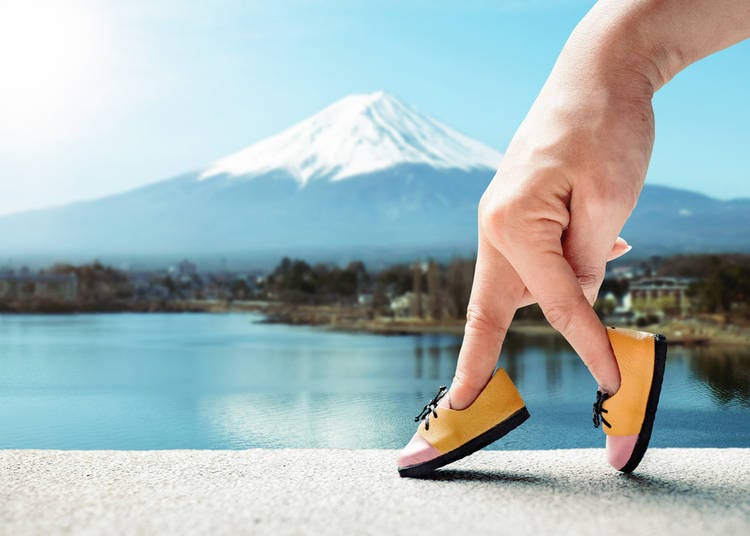
Most of us know that when we visit new cities and areas, we’ll need to walk a lot - and in many cases, we will walk considerably more than we would normally. Yet some days in Japan may challenge even the most seasoned travelers when it comes to going from place to place on foot.
So many things to see and, more importantly, so little time. The transportation system in Japan is top-notch, but it’s often less time-consuming to walk from one place to another than to commute (it can also help save some money if you’re on a budget).
While walking for 20 minutes or half an hour to your next landmark may not look like much, when you do that several times a day, the minutes (and the miles) will stack up. The health-conscious among us might even see an average of around 10,000 to 15,000 steps per day.
Those comfortable shoes you decided to bring with you will be the deciding factor between being forced into your hotel bed the following day and being ready to go for round two in the morning.
The same goes for socks. Make sure that your footwear is not only comfortable but also presentable. As most of you probably already know, you should always take your shoes off when entering a home in Japan.
Some of our favorite and most comfortable socks may be those we’ve had for years. They may be worn out or a little damaged somehow. We usually don’t care, though. Who’s going to see them after all.
Well, in Japan, many people. It’s not only when visiting private residences that you’ll be asked to take your shoes off, but also in indoor areas in temples and shrines, as well as in some restaurants and even some museums.
There’s really no way to know by looking at the signs outside which establishments will require you to remove your shoes before entering, so it serves to be prepared to quickly and seamlessly slip in and out of your shoes.
Japan Travel Tip 3. Pack small gifts and mementos for others

This might sound a little counterintuitive. If you’re traveling abroad, you’ll likely want to buy some souvenirs for your friends and family back home. We rarely consider small presents for people we may meet during our travels.
This recommendation is handy if you’re visiting Japan. You may already know some people here, or you may make new friends. It’s not uncommon to form bonds with people you meet in a bar or restaurant or while walking around.
Despite some stereotypes about Japanese people being shy, the truth is that, more often than not, it’s easy to make friends with them in social settings. Especially if you know a little more than the average visitor about Japanese culture and mannerisms, you might end up spending a few days with people that you met randomly.
Often, your Japanese friends will customarily buy you a small gift to remember them and your trip before you leave. If you stay at a bed and breakfast with a family or at a guest house with many other people, receiving some gifts is almost a given.
So why not be prepared to return the kindness? Of course, you could buy something in Japan, and it will surely be appreciated.
Yet, how cool would it be to give them something they could not easily find in their own country? No one will really expect a gift from you, nor would anyone think any less of you if you haven’t thought of it, but if you do, it will surely leave an even sweeter memory of you for the people who’ve met you.
Japan Travel Tip 4. Don’t overload your itinerary
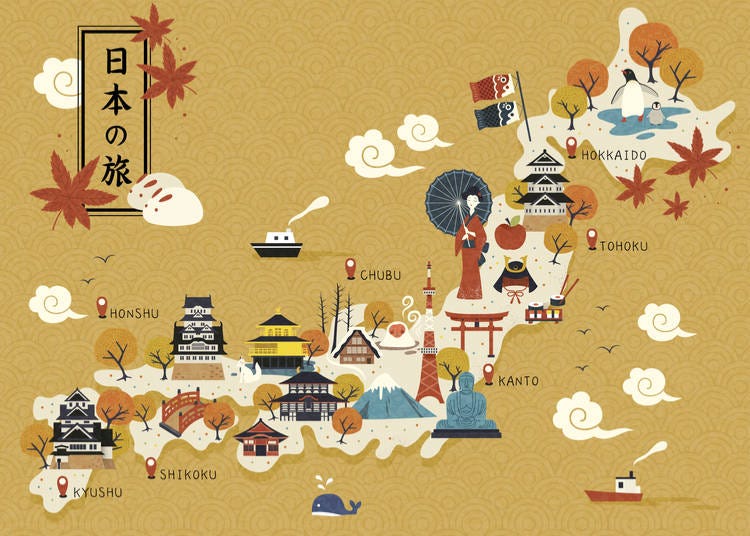
You’ve finally managed to fit that trip to Japan you always wanted to take into your schedule. You have a few days, but there are so many cities you want to see, and who knows when you’ll be able to return? Why not visit as many as you can during that week/ten-day period you’ll spend there?
We would recommend against it. While it’s true that Japan has a lot of exciting cities worth visiting (one might even say too many), how much can you see of any given one if you only dedicate one or two days to it (including the travel time to get there)? Indeed you’ll have to cut out some fantastic options, but if you do, you’ll find that you’ll enjoy your trip more. Each city has much to discover, many things to try, and a world worth of people to meet.
Especially if you like to interact with the locals and seek to experience places that most tourists don’t have time to see, focus not on how many cities you can say you’ve been to, but on how much of each city you managed to learn about.
Most people prefer to visit two or three cities during their first trip. Others would even go as far as staying only in one town for their whole vacation. Ultimately you’ll decide, but if at all possible, make sure you stay in Japan for as long as you can.
Depending on where you’re traveling from, the jet lag alone might be enough to make you lose a couple of days since you’ll feel more tired than you’d expect, and you’ll want to rest.
The first time I visited Japan, I used up my whole vacation in Tokyo and never regretted it. It took years until the second visit, and I did the same in another one. The best framework for most would be two to three cities within a 10-day to two-week period.
Japan Travel Tip 5. Plan for what-ifs
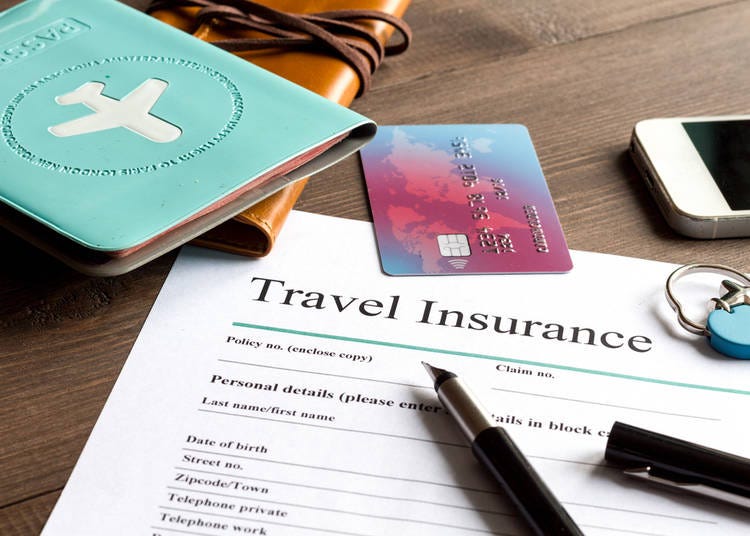
One thing that people often overlook (and some later regret not thinking about) when traveling is some form of medical or travel insurance.
Depending on your country of origin, there probably will be many companies that offer this kind of service. Some of them may look pricey (although some research will likely result is something affordable), but they could turn out to be a real money-saver (not to mention giving peace of mind). No matter where in the world you travel, it’s always good to be prepared.
In Japan, for example, should you need to get visited by a doctor, or even worse, to be hospitalized, you may have to face some serious expenses. Extended stays in a hospital might pile up very high (50,000 yen/day). A hospital visit could cost you anywhere between 10,000 yen and 30,000 yen (10,000 yen amounts to around US$100 at the current exchange rate).
Hospital bills aren’t any different for foreigners when compared to Japanese citizens, but Japan implements a mandatory National Insurance that cuts the costs by at least 70%.
Many private insurance companies in the country and abroad provide a similar service. Hopefully, you won’t need to use your insurance, but, especially if you travel with kids, it’d be a highly recommended addition to your top-of-the-list preparations.
Japan Travel Tip 6. Don’t overpack

You’re usually a thrifty traveler. You don’t really buy too much stuff when you leave your country. Why would Japan be any different? Because there is so much that you will like and will hate yourself if you don’t buy it!
It doesn’t matter what you’re into: clothing, anime, cute items, masks, shoes, quirky products or gizmos, puzzles, decorative items, traditional products, unique snacks, and food - Japan has its own version of it, and you will want to take it back with you. You won’t need to pack too many articles of clothing, even for a more extended trip.
Most hotels, guest houses, or bed and breakfasts have a laundry machine. It’s also not uncommon to see several coin-operated self-service laundries. The space you’ll save will likely be filled with new clothes, presents, and much more by the time you return home.
In addition, some train stations do not have escalators or elevators. Carrying around a cumbersome suitcase (or even more than one) would be challenging.
Japan Travel Tip 7. Check the weather
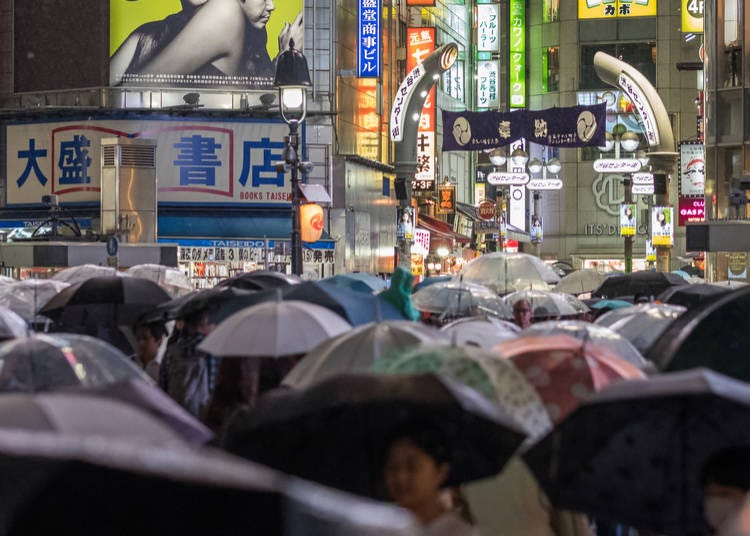
Since we are talking about packing, make sure that you check the weather in the area(s) of Japan you’ll be visiting.
The weather in Japan changes a lot from area to area, and you may be caught off guard if you don’t do some research.
Summer in Japan (especially in Kyoto, but also in many other cities) can be unbearably hot and humid. Winter in Hokkaido is extremely rigid.
Furthermore, will it be the rainy season in Japan during your trip? Will you have to deal with some typhoons here and there? All these things are good to know when packing. Depending on your country of origin, you may be surprised at how different the weather is in Japan from the one you were expecting!
Japan Travel Tip 8. Save money on transport by getting a Japan Rail Pass
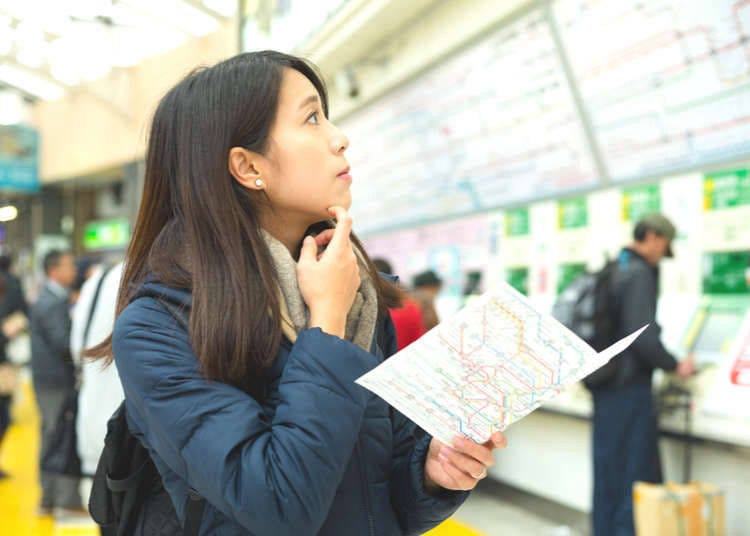
Many of the transport operators in Japan offer special discounted tickets, passes, and fares for visitors with a foreign passport. Each of these passes offers great savings off the regular fares - but to really get your money's worth, you'll want to at least plan what cities you intend to visit.
Especially if you are visiting Japan for an extended holiday (1 week or more), you may wish to consider purchasing a pass in advance.
Some of the most popular passes include:
All Japan
・Japan Rail Pass (a.k.a. JR Pass): A cost-effective rail pass for long-distance train travel. This pass covers unlimited rides on JR trains (most Shinkansen bullet trains included) for one, two, or three weeks.
Tohoku Area
・JR East Tohoku Area Pass: Get unlimited travel on Shinkansen and other trains, from Tokyo to Japan's northeastern region of Tohoku, for 5 consecutive days. This pass is great if you want to get to famous sightseeing spots like Ginzan Onsen, Yamadera, and Matsushima.
Tokyo Area
・Tokyo Subway Ticket: These open passes are perfect for traveling around Tokyo on the Tokyo Metro and Toei Subway lines for 1-3 days. This is especially useful if you intend to explore all that Tokyo has to offer!
Osaka/Kyoto Area
・Kansai WIDE Area Excursion Pass: Enjoy unlimited rides on JR West lines, including express trains/Shinkansen in the covered area for 3 consecutive days. With this pass you can freely enjoy sights like Universal Studios Japan, Kinosaki Onsen, and Himeji Castle, and even over to the Tottori Sand Dunes.
・Kansai Thru Pass: With this fantastic pass, you can get unlimited travel around Osaka and Kyoto for 2 or 3 days. Valid on over 30 private train lines and buses, including the Osaka Metro, Kyoto Municipal Subway, Keihan, Nankai, and Hankyu lines, it covers many of the major sightseeing areas. You can also present the pass for discounts at around 350 tourist facilities around the Kansai region.
Kyushu Area
・JR Kyushu Rail Pass: If you're looking to ride the rails around Japan's southwestern island of Kyushu, this is a great way to save - with unlimited travel all over the island for 3 or 5 days.
Japan Travel Tip 9. Make sure where to eat
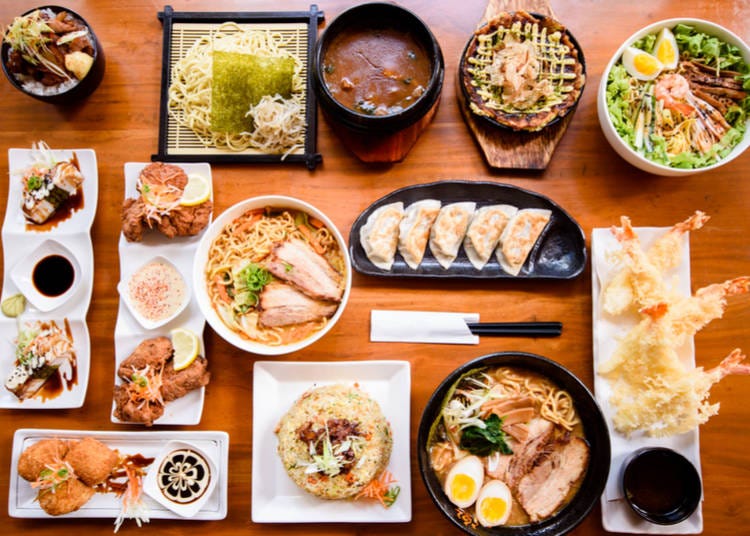
Last but not least, do some research on where to eat. Food in Japan is fantastic. From fine dining to typical Japanese “fast food,” there is so much to experience.
Sometimes, the problem is that when walking in the streets of a Japanese city, it’s tough to understand from the outside what kind of establishment you’ll be stepping into. Sometimes you’ll see pictures outside by the door, but often there will just be a sign with the name of the place.
Occasionally there might be another sign indicating the kind of food that is served (yakitori, sushi, ramen, soba, yakiniku, shabu-shabu, etc.), but if you’re not proficient in Japanese (and especially hiragana, katakana, and kanji reading), you’ll still feel a little lost.
Looking up some places you absolutely want to try will solve these issues. Even if you’re comfortable with your Japanese, and know a lot about Japanese food, you may not be sure which restaurants in a given city are a must-try for visitors. Make sure you don’t miss out and do some research.
Below are some helpful articles to help kickstart your foodie bucket list!
- Tohoku
- ・16 Crazy Tasty Japanese Tohoku Region Dishes You've Never Heard of
・5 Mouthwatering Reasons to Visit Japan's Secret Sendai City
- Kanto
- ・Local Cuisine Guide: The 15 Best Tokyo Dishes You Need To Try Next Visit
・Tokyo’s 5 Must-Try Ramen Restaurants
You will certainly enjoy your trip to Japan. This article and many more on this website will help you find even more value in your trip, and ultimately your experience with the country, its sights, and its people will not let you down.
Lucio Maurizi is an automotive expert specializing in Japan's car scene and auto-tourism. With an MA in East Asian History from La Sapienza Università di Roma, he's a multi-talented contributor to travel platforms like LIVE JAPAN, Japan Travel, and GPlus Media. His Instagram account (50k+ followers) offers insider views on Japan's automotive culture. Lucio also actively collaborates with professional drivers and influencers and organizes can't-miss car events in Tokyo.
*Prices and options mentioned are subject to change.
*Unless stated otherwise, all prices include tax.
Recommended places for you
-
Goods

Yoshida Gennojo-Roho Kyoto Buddhist Altars
Gift Shops
Nijo Castle, Kyoto Imperial Palace
-

Kanzenkoshitsuyakinikutabehodai Gyugyu Paradise Sannomiya
Yakiniku
Kobe, Sannomiya, Kitano
-
Appealing

Rukku and Uohei
Izakaya
Sapporo / Chitose
-

ISHIDAYA Hanare
Yakiniku
Kobe, Sannomiya, Kitano
-

Kambei Sannomiyahonten
Yakiniku
Kobe, Sannomiya, Kitano
-

Jukuseiniku-to Namamottsuarera Nikubaru Italian Nikutaria Sannomiya
Izakaya
Kobe, Sannomiya, Kitano
-

Step Into the World of Chiikawa: Immersive 'Chiikawa Park' to Open in Ikebukuro's Sunshine City This July!
-

Discover Japan Duty Free GINZA: A Unique Shopping Experience in the Heart of Tokyo
by: Chehui Peh
-
Ad

Tokyo Comedy Bar: Where Jokes and Craft Beer Flow Freely
-

Hotel Green Plaza Hakone (Review): Soak in the View of Mt. Fuji from an Open-Air Hot Spring
by: Mayumi Kawai
-

There’s a new museum in Japan, but almost all of its location is a secret
-
Ad

Lapoppo Farm, one of Japan's leading makers of sweet potato treats! An in-depth guide to the secrets behind its popularity, including best-selling products and facilities!
-

What to Pack for Japan: 8 Essential Things for a Hassle-Free Trip
-
Ad

Plan Your Perfect Hanami to Remember With Ecute Ueno - Obento Lunchboxes, Adorable Sweets, and Much More!
-

Tokyo in Bloom: 5 Must-Visit Spots for Japanese Flowers in June
-

Kaminoyama Onsen Guide: Best Things to Do in Japan's Samurai Town!
-

You Won't Believe Why Japan Goes Wild for These Spring Strawberry Desserts in 2021!
by: Ran Tanaka
-

Plan Your New Year Travel Early! Understand the Special Shinkansen Reserved Seat Rules for a Comfortable Trip
by: Timothy Sullivan
- #best sushi japan
- #what to do in odaiba
- #what to bring to japan
- #new years in tokyo
- #best ramen japan
- #what to buy in ameyoko
- #japanese nail trends
- #things to do japan
- #onsen tattoo friendly tokyo
- #daiso
- #best coffee japan
- #best japanese soft drinks
- #best yakiniku japan
- #japanese fashion culture
- #japanese convenience store snacks













